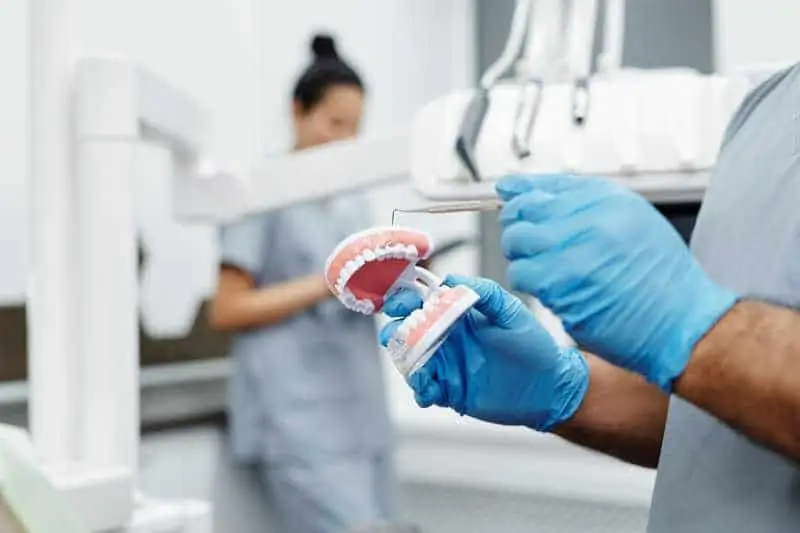
When your dentist in Chapel Hill talks about gum disease, we’re not just talking about its risks to oral health. The truth is, gum disease has also been linked to several whole-body concerns, such as cardiovascular diseases, respiratory problems, and certain types of cancer. However, there is good news. Gum disease can be treated and reversed if it’s caught in the early stages. Therefore, it’s important to know what the early stages of gum disease look like.
Gum disease can be broken down into two main stages – gingivitis and periodontitis.
The very first stage of gum disease is gingivitis. It’s during this stage when your dentist in Chapel Hill can often treat and reverse gum disease successfully. However, the trick is to catch it in this early stage. Some ways you may be able to tell that you have gingivitis are by looking out for the following signs:
Keep in mind that sometimes gingivitis won’t show many or any symptoms. It’s important to always see your dentist every six months so they can monitor changes in oral health and catch potential problems early.
If gingivitis isn’t treated and it progresses into periodontitis, the chances of the disease being reversed become less and less likely, if not impossible. Periodontitis essentially means that more than just the gum tissues are affected at this point, and it’s now worked its way into the bone. There are various stages of periodontitis.
Stage 1: Gums will start to pull away from the teeth, known as gum recession. This creates pockets where food and bacteria can settle in. The connective tissues between teeth and bone are minorly affected.
Stage 2: Gum recession and bone loss continue to become more noticeable and extreme in the second stage of periodontitis. Teeth may also become loose or wiggly.
Stage 3: The advanced stage of periodontitis is a classification used when there is more than 50% bone loss. There’s also a good chance that some teeth have already fallen out, and more will follow.
The most common cause of gum disease is poor dental hygiene, so one of the best ways to avoid getting gum disease is to brush your teeth twice a day and floss once a day. Smokers are also more likely to develop gum disease than non-smokers. Avoid smoking or using any type of tobacco. Lastly, it’s crucial that you see your dentist in Chapel Hill twice a year for preventive checkups, cleanings, and x-rays so they can keep an eye out for the early signs of gum disease and treat it proactively.